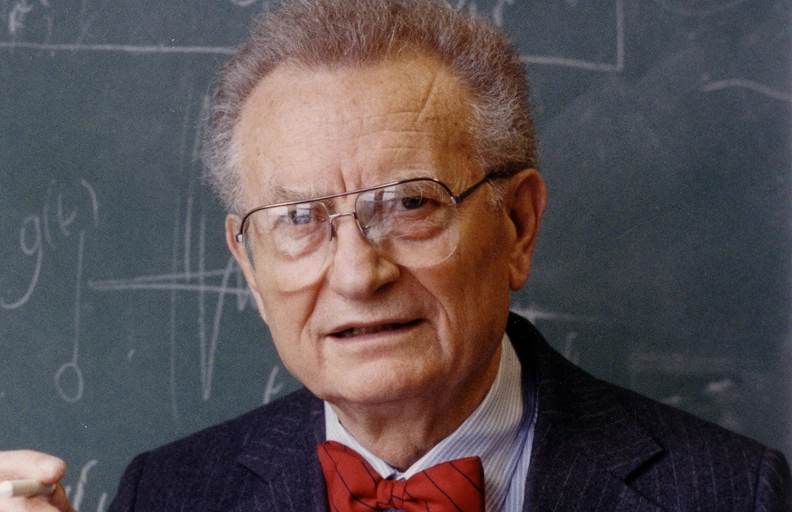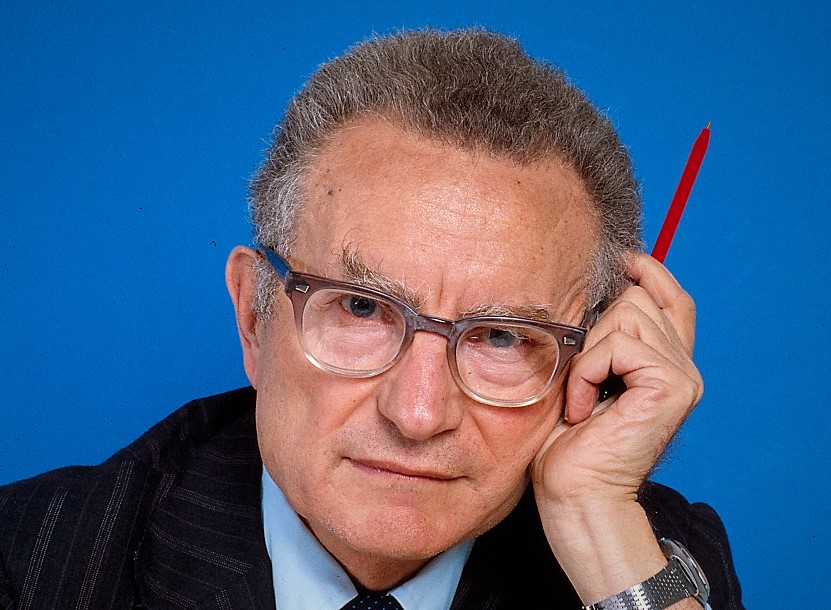By his own recollections and declaration, Paul Samuelson was born an economist in a Chicago University classroom at 8 a.m. on the 2nd of January 1932.
By Anthony Kila

If in the course of your general education, like a long walk in the woods, with its ups and downs, you were so lucky or unlucky to have been taken through the various definitions and descriptions of economics, ranging from the very respected wealth definition by Adam Smith, to the much appreciated welfare definition of Alfred Marshall; the very widely accepted scarcity definition by Lionel Robbin; and then, you got to discover the definition by Paul Samuelson, where economics is defined as, “the study of how people and society choose, with or without the use of money, to employ scarce productive resources, which could have alternative uses, to produce various commodities over time and distribute them for consumption now and in the future among various persons and groups of society,” then you would have easily understood why Paul Samuelson is described as the father of modern economics.
Paul Samuelson’s definition not only captures all the nuances in the definitions of other economists before him and many after him, it also introduces and encapsulates the concepts of dynamism and sustainable development as well as those of class; and the idea that we can still talk of economy with or without the use of money. The latter consideration allows Paul Samuelson’s conception of economics to be valid and applicable from and in the context of the era of trade by barter to that of trade by precious metal, to that of exchange measured in banknotes, to our period of electronic transfer into which the bitcoin is creeping.
What makes Paul Samuelson an unforgettable, and hence, describable as a father of modern economics, however, goes beyond his very general definition of economics and those new to this economist must be warned: Paul Samuelson was a mathematical economist not only in practice, but he also notionally argued that mathematics is the natural language of economics and based on this principle, he provided mathematical explanations and elaboration to important economic concepts such as the Keynesian Principles.
Remarkably, notwithstanding his commitment to rigour and details that culminated in his winning the Nobel Prize in Economics Science in 1970, (he was the first American to win the prize), a prize that the awarding academy justified by noting that Paul Samuelson “has done more than any other contemporary economist to raise the level of scientific analysis in economic theory,” Paul Samuelson was himself also famous for noting that, “Economics is not an exact science. It’s a combination of an art and elements of science. And that’s almost the first and last lesson to be learned about economics: that in my judgement, we are not converging toward exactitude, but we’re improving our data bases and our ways of reasoning about them.”
Born in 1915 in Gary, Indiana, USA, as Paul Anthony Samuelson, he is one of the first fully made-in-America great economics thinkers. It is not at all surprising that the New York Times, in an article written by Michael M. Weinstein, and published in 2009 when Paul Samuelson died at the age of 94, described him as the foremost academic economist of the 20th century.
He studied at the University of Chicago, Harvard University, where he won the David A. Wells prize for producing the best doctoral dissertation in economics, and taught as a professor of economics at the Massachusetts Institute of Technology. At MIT, he started out as an assistant professor at the age of 25; and at 51 he was named “Institute Professor”, MIT’s highest faculty honour. He also served as an economic adviser to the American government (two presidents, John F. Kennedy and Lyndon B. Johnson) and he was awarded the National Medal of Science in 1996 before he died in Belmont, Massachusetts in 2009.
READ ALSO: As Fashola delivers TheNiche Lecture
John Richard Hicks: Father of ‘Compensation Principle’
His doctoral thesis titled, “Foundations of Analytical Economics” later turned to his multi translated and much republished book, “Foundations of Economics Analysis”, in which he gave mathematical explanations to major economic themes. General education, however, knows Paul Samuelson more for his, “Economics: An Introductory Analysis”, which is arguably the most read economics text book in the world. Outside the classroom, Paul Samuelson was an active social commentator and a prolific columnist whose essays in Newsweek magazine were the weekly pages to go to for many intellectuals and policy makers.

On a very personal note, I must mention that my introduction to Paul Samuelson was through my late papa, Mr. HRB Kila, who, without ever giving me the magazine, will look towards it and say, “have you read Samuelson this week?” And without waiting for my answer would quip to himself, “you should”. When years later, my “real salary” allowed me to afford my first gift to HRB it was a paid subscription to the Newsweek magazine. With hindsight, I know I should have sent that subscription with a gift note that reads “for Daddy, for Samuelson.”
By his own recollections and declaration, Paul Samuelson was born an economist in a Chicago University classroom at 8 a.m. on the 2nd of January 1932. His Damascus moment was stirred by the lesson of the day on Thomas Malthus, another icon of the unforgettables pantheon; yes, that one of the dangers of population growth. It is easy to see the attraction, the language and content of Malthus was logical, practical and mathematical.
Those who tend to “reduce” Paul Samuelson to the economist that translated economic theories of other economists into mathematics can be forgiven, although I doubt “reduce” can be an appropriate term to describe the task of turning economics or, indeed, any discussion and opinions into provable and measurable scientific elements.
If we talk about the dynamics and stability of economic systems today and we assume it is a normal and essential element of economic discussions, it is largely because Paul Samuelson spent time on calling our attention to it and he did it by grounding stability in dynamics. For him stability behaviour was like the soul and mind of business and it incorporates all analyses, static and dynamic. This idea is what is behind the Correspondence Principle that explains to us that there is a formal dependence between comparative statistics and dynamics.
In our studies of consumer behaviour, we owe the theory of revealed preference to Paul Samuelson, who with his proposal took us beyond the utility theory developed by Jeremy Bentham. With the theory of revealed preference, Paul Samuelson showed us with observations and empirically verifiable assumptions and conclusions on consumer behaviours.
It was Paul Samuelson that mathematically articulated the concept of Public Good as we know it today; for him, a good or service that can be used by many people without losing its value (non-rivalrous) and is available to all citizens (non-excludable).
- Join me on twitter @anthonykila to continue these conversations.
- Anthony Kila is Centre Director at CIAPS Lagos. (www.ciaps.org)




